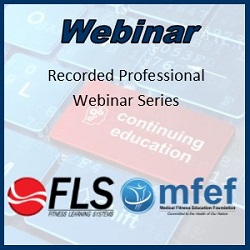
By: Dr. Irv Rubenstein
Webinar Description:
Non-contact anterior cruciate ligament (ACL) knee injuries can be devastating to an athlete?s career, psyche and pocketbook. Over the past 25 years, high-quality research has provided more insight into the causes of these and other knee injuries enough so that many ACL prevention programs have evolved world-wide to reduce the risk to athletes. The concept of pre-habilitation has largely come to maturity in the shadows of these kinds of programs. Here, prehab will be brought back into the weight room, allowing trainers and therapists to develop athletes well before they hit the field or court, and reduce their risk of a knee injury. In light of what science has taught us about how these injuries occur, some common variations and some new considerations on exercises athletes often do will inspire you to re-configure the way you prepare athletes at all levels to compete safely.
Education Level: All Levels
Prerequisites: None
Successful completion of the quiz is necessary to receive Continuing Education Credit.
Approved for:
| 1.0 | American College of Sports Medicine (ACSM) |
| 0.5 | National Council on Strength & Fitness (NCSF) |
| 1.0 | National Strength Professionals Association (NSPA) |
| 1.0 | YMCA |
Note 1: NSCA offers continuing education to those who take the Live Webinar. To get 1 Hour of NSCA continuing education credit, you must watch the webinar live, and then contact Ivy@medicalfitnessnetwork.org to receive a Certificate of Attendance.
Webinar Objectives:
After completing this course you will be able to:
- Describe the concept of Prehab and discuss the implications in training.
- Identify the mechanism and 5 potential risk factors for ACL injury.
- Identify the 7 aspects of an ACL prevention program.
- Explain how to safely and effectively perform 20 kinds of exercises for an ACL prevention program.
System Requirements to View This Webinar
This webinar is tablet enabled and can be viewed on an iPad or Android tablet as well as a PC or MAC Computer
